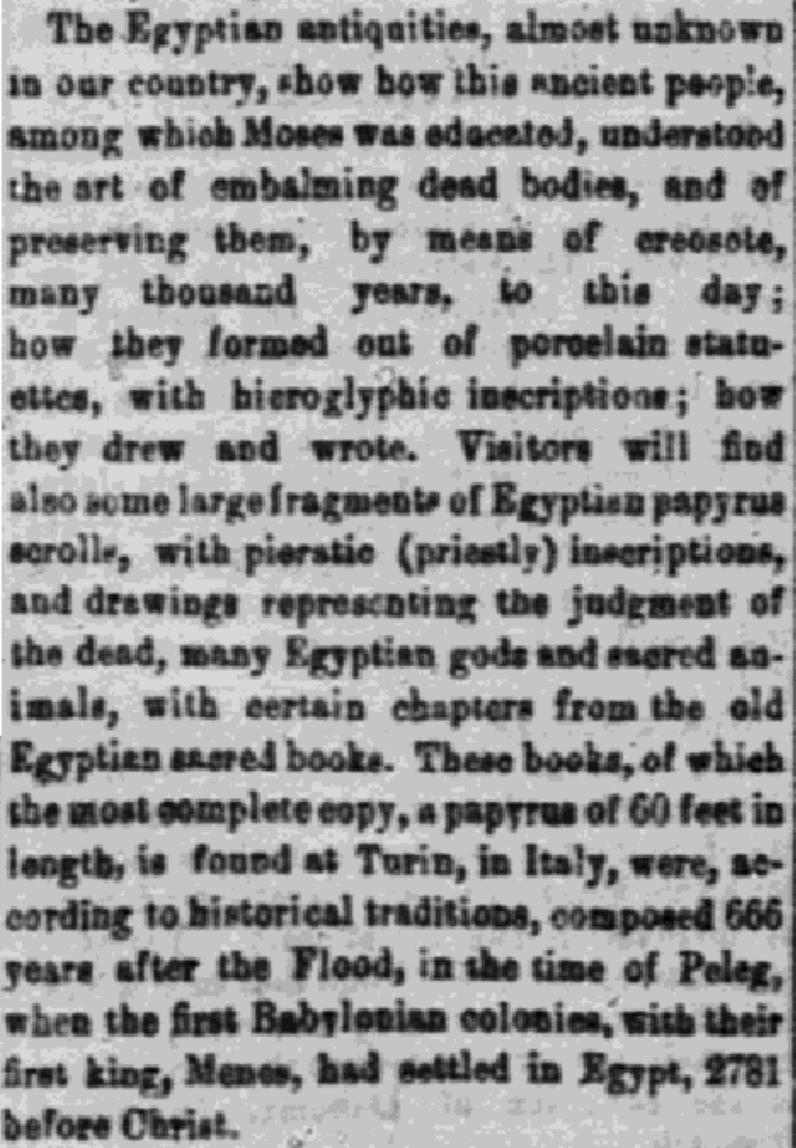GS mentions JS Papyri in St. Louis Museum, describes them and their content.
- Type
- News (traditional)
- Source
- Gustav Seyffarth Non-LDS
- Hearsay
- DirectJournalism
- Reference
Gustav Seyffarth, "The St. Louis Museum," Weekly St. Louis Evening Pilot 3, no. 34 (September 13, 1856): [2]
- Scribe/Publisher
- Weekly St. Louis Evening Pilot
- People
- Gustav Seyffarth
- Audience
- Reading Public
- Transcription
The Egyptian antiquities, almost unknown in our country, show how this ancient people, among which Moses was educated, understood the art of embalming dead bodies, and of preserving them, by means of creosote, many thousand years, to this day; how they formed out of porcelain statuettes, with hieroglyphic inscriptions; how they drew and wrote. Visitors will find also some large fragments of Egyptian papyrus scrolls, with pieratic (priestly) inscriptions, and drawings representing the judgment of the dead, many Egyptian gods and sacred animals, with certain chapters from the old Egyptian sacred books. These books, of which the most complete copy, a papyrus of 60 feet in length, is found at Turin, in Italy, were, according to historical traditions, composed 666 years after the Flood, in the time of Peleg, when the first Babylonian colonies, with their first king, Menes, had settled in Egypt, 2781 before Christ.
- Citations in Mormonr Qnas
The B. H. Roberts Foundation is not owned by, operated by, or affiliated with the Church of Jesus Christ of Latter-day Saints.

